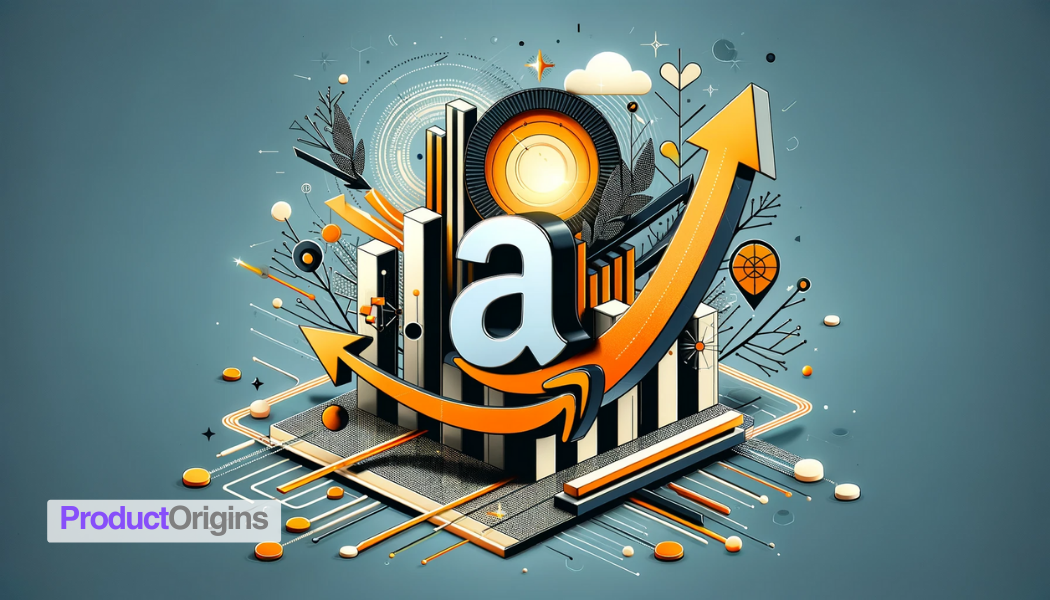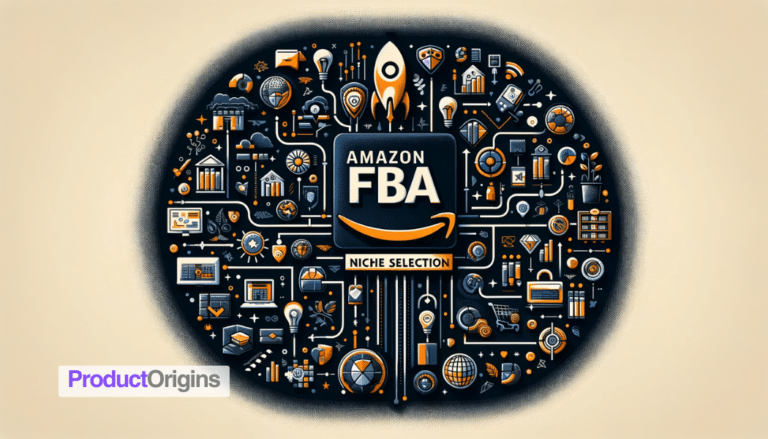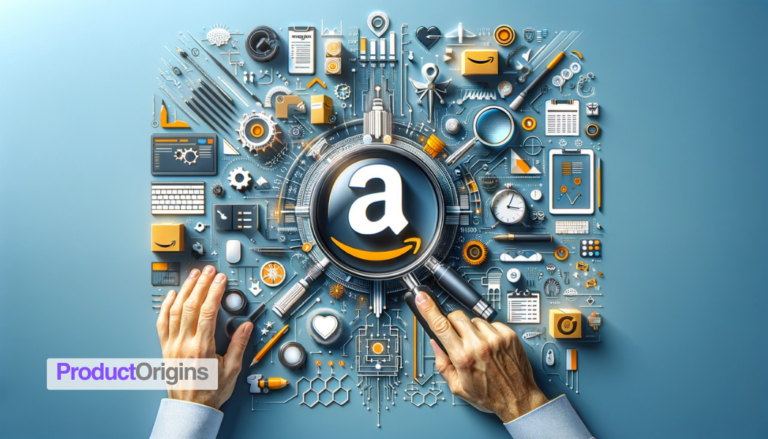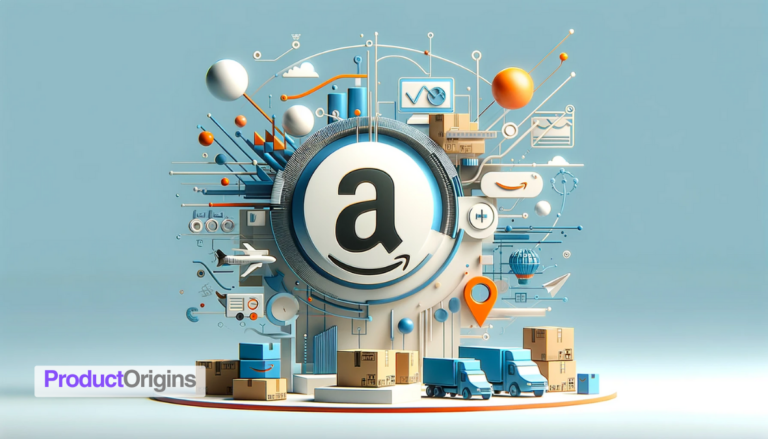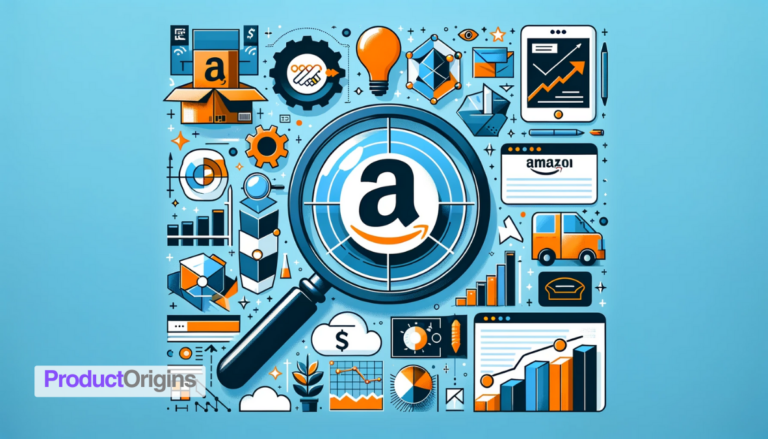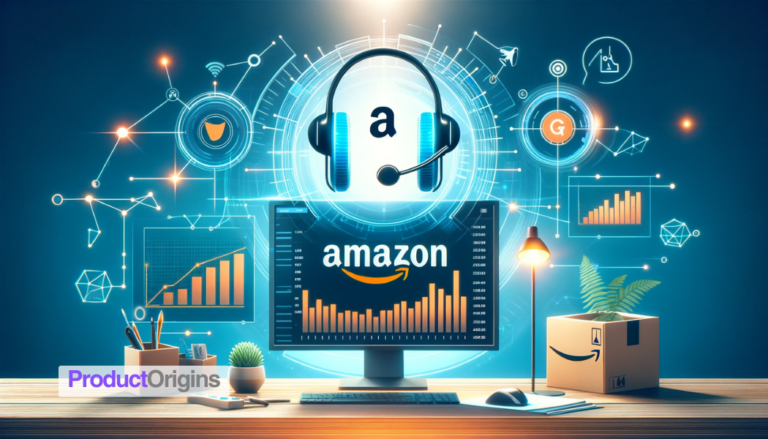Running a successful Amazon FBA (Fulfillment by Amazon) business requires more than just having a quality product listed on the platform. In today’s increasingly competitive e-commerce landscape, leveraging external traffic sources is essential for boosting product visibility, improving search rankings, and driving sales on Amazon.
In this comprehensive guide, we will explore proven strategies for integrating external traffic sources like social media, search engine optimization, paid advertising, email marketing, and beyond to catapult your Amazon FBA business.
Overview of Amazon FBA and the Growing Importance of External Traffic
For the uninitiated, Amazon FBA allows you to leverage Amazon’s vast fulfillment and delivery infrastructure to scale your e-commerce operations. As one of the largest marketplaces globally, Amazon offers access to over 300 million active customers.
While getting up and running on Amazon FBA is easier than ever, standing out from the competition is getting harder each day. With ever-evolving search algorithms, advertising auctions, and buyer behavior, passive growth is no longer an option.
This is where external traffic sources come in. Driving qualified visitors to your listings from platforms outside Amazon has tangible benefits:
- Increased Sales: More exposure and clicks directly translate to higher sales and conversion rates.
- Improved Rankings: Signals like click-through rates and session duration help Amazon’s A9 algorithm determine search rankings.
- Lower Advertising Costs: You can lower bids and budgets for Amazon PPC ads as sales get supplemented by organic and direct traffic.
- Brand Awareness: Every additional touchpoint for potential buyers helps reinforce your brand and products.
Clearly, not leveraging external traffic effectively leaves potential revenue on the table. It not only boosts your Amazon FBA sales directly but also sets you up for sustainable long-term success.
Explaining How External Traffic Boosts Amazon Rankings and Sales
To understand why external traffic helps boost Amazon FBA performance, we must appreciate how Amazon’s search algorithm works.
The A9 algorithm, powering search and product rankings on Amazon, considers over 100 different signals. While the exact details are secret, our research shows three key ranking factors influenced by external traffic:
1. Click-Through Rates: Listings that receive higher CTRs from external links tend to rank better. More clicks signal greater shopper intent and relevance.
2. Session Duration: Visitors from external sites often spend more time researching products before adding them to the cart. Longer sessions signal greater buyer confidence.
3. Conversion Rates: Higher sales numbers and conversion rates are strong signals that your listing satisfies customer search intent.
By driving targeted, high-quality traffic to your listings, you can positively impact these key A9 ranking factors. And in the fierce battle for those coveted first-page rankings, these minor improvements give you a sizeable competitive advantage.
Combining the direct sales upside and sustainable organic boost, integrating external traffic provides outstanding ROI compared to relying solely on Amazon’s internal traffic.
Brief Preview of Key External Traffic Strategies
While later sections will explore tactics in greater detail, at a high level, external traffic for Amazon FBA can be classified into four primary categories:
Social Media Marketing: Advertising on platforms like Facebook and Instagram, influencer collaborations on YouTube and TikTok, and optimized social content.
Search Engine Optimization: Optimizing your website and content by leveraging keywords, backlinks, blogging, and technical SEO best practices.
Pay-Per-Click Advertising: Purchasing paid ads on Google and Amazon Marketing Services and through retargeting campaigns.
Affiliate & Email Marketing: Partnerships with relevant blogs and websites through affiliate links and proactively building email subscriber lists to market to.
With the stage set, let us explore specifics of major external traffic sources to identify the optimal strategies for your Amazon FBA business.
External Traffic Sources for Amazon FBA
While a wide range of platforms can drive external visitors to your Amazon listings, they vary significantly in terms of reach, costs, and implementation complexity. Choosing channels aligned closely to your products, resources, and strengths is vital for success.
Let us analyze primary external traffic sources in detail:
Social Media Marketing
With 4.65 billion users globally, social media offers unparalleled reach and engagement opportunities to connect with potential buyers. Platforms like Facebook, Instagram, and TikTok have powerful advertising capabilities, allowing organic visibility through content sharing and influencer marketing.
For Amazon sellers, your target customer demographics and product segments would dictate the exact social media strategies. But some proven tactics include:
Facebook and Instagram Ads
With granular targeting options down to interests, behaviors, and intent signals, Facebook and Instagram ads can drive conversions across the purchase funnel. You can start with prospecting cold audiences and gradually shift budgets to retargeting and lookalike audiences for the best ROI.
Influencer Marketing on YouTube, TikTok, etc.
Identifying influencers aligned with your niche and collaborating with them to feature or review your products can significantly expand your reach. Even nano and micro-influencers with engaged followers in mere thousands or tens of thousands can deliver outsized impact.
Building Engagement through Content Marketing
Creating and optimizing social posts, videos, and blogs related to your products and having followers organically share them increases awareness and social proof. Hashtags, tagging influencers, and running contests or giveaways help with visibility.
Search Engine Optimization (SEO)
While Amazon has an internal search engine, Google still drives significant product discoveries and intent-driven purchases. Ranking highly for relevant keywords on Google greatly expands your digital footprint.
Some proven SEO strategies include:
Optimizing Online Content and Blogs
Creating content like how-to guides and buying criteria articles optimized with selected keywords helps attract organic search traffic from Google. Optimizing meta-titles, descriptions, alt-text, site speed, and overall on-page elements is key.
Leveraging Backlinks and Partnerships
Collaborating with niche websites and blogs to get backlinks pointing to your content boosts rankings. Guest posting, interviews, sponsored giveaways, and content distribution partnerships help build quality backlinks at scale.
Pay-Per-Click (PPC) Advertising
While paid advertising doesn’t technically qualify as “organic” external traffic, it does wonders for fueling direct site clicks and sales. With precise targeting capabilities, you can first reach the most likely potential buyers and scale back as organic and influencer channels pick up momentum.
Google Ads
As the world’s largest PPC advertising platform, Google Ads should be integral to your customer acquisition strategy. You can tailor keyword and placement targeting to each phase with support for all buyer funnel stages.
Amazon Sponsored Products
While technically internal to Amazon, these ads appear prominently on search results and product detail pages. Since buyers are already in a purchasing mindset on Amazon, they convert exceedingly well.
Retargeting Campaigns
Placing PPC ads exclusively showing to visitors who earlier expressed intent through site engagement helps keep your brand top of mind while having them complete purchases. The relevance targeting makes for stellar conversion rates.
Affiliate and Email Marketing
Expanding your external ecosystem through partnerships and owned channels is critical for reducing reliance on any single platform. Affiliate marketing and email newsletters are great examples that offer fantastic ROI.
Affiliate Partnerships
Collaborating with niche bloggers and non-competing e-commerce sites by having them place your affiliate links in relevant content helps attract engaged visitors. Offering higher than usual commissions helps drive more partnerships.
Building Email Lists and Campaigns
Email marketing fuels repeat purchases and reduces churn, making it well-suited for eCommerce. Gradually building your subscriber list through giveaways and pop-up call-to-actions and sending consistent value-driven campaigns promotes brand loyalty.
As evident, every external traffic channel has unique pros and cons. Aligning sources to your business strengths and goals allows you to leverage your time and resources.
Pros and Cons of Each External Traffic Source
Before diving further into tactical implementations, let’s summarize the comparative benefits and limitations across the external traffic landscapes:
| Channel | Pros | Cons |
| Social Media | Broad reach, interactive engagement, strong attribution | Content creation time investment, algorithm volatility, cluttered space |
| SEO | Free organic traffic, high conversions, brand authority | Slow results, ongoing optimization needs, Google algo changes |
| Paid Ads | Instant traction, precise targeting, controls spend | Risk of high CPCs, budget management crucial |
| Affiliate & Email | Cost-efficient access to engaged users, high lifetime value | Need substantial existing traction, deliverability issues |
With a firm grasp on all available options for driving external traffic to Amazon product listings, let’s shift gears to tactical implementation.
Driving Targeted Traffic to Amazon Listings
Getting external visitors is just the first step. Converting that hard-won traffic into engaged sessions and actual sales requires additional optimization.
Here are proven techniques for maximizing the impact of external traffic sources:
Creating Compelling Landing Pages
The listings customers land on after clicking external links dramatically impact conversions. Well-designed landing pages aligned to the ad/post context prime them for purchase action.
Elements like strong value propositions, quality images/videos, peer reviews, and ample calls to action increase engagement. Clearly highlighting USPs using bullet points or comparatives helps convey product benefits at a glance.
Utilizing Tracking Links and UTM Parameters
Rather than directly linking to product listings, use tracked affiliate links tagged with campaign parameters like utm_medium and utm_content. This allows for measuring platform-wise traffic and engagement levels.
To analyze asset-level performance, you can even set up separate links for each creative asset, like a social ad or email campaign.
Integrating External Traffic with Amazon Goals
Set up goals within Amazon Marketing Services corresponding to metrics indicating desirable visitor behavior, like product page views, video plays, downloads, or clicks.
Fire relevant engagement event pixels from landing pages to enable tying external channels to these goals achieved. This reveals how visitors from each source behave.
Optimizing Listings for Conversions
Beyond landing pages, ensure your Amazon listings themselves drive action post-click. Elements like high-quality photos/videos, detailed technical specifications appealing to enthusiasts, ample positive social proof through ratings and reviews, and prominent calls-to-action to add items to a cart or wishlist boost conversions.
Now that external traffic sources are directly tied to goal completions on Amazon, measuring channel efficacy becomes straightforward. Let’s examine analytics for extracting actionable insights.
Analytics and Performance Tracking
While driving external traffic is the necessary first step, optimizing based on measured performance is equally critical for success.
Implement tracking across key metrics to link external channels with Amazon conversions and continually refine strategies.
Exploring Essential Tracking Metrics
Align analytics to priorities like awareness, cost efficiency, and sales volumes/order values to pick relevant key performance indicators (KPIs) for tracking.
Click-through-Rate (CTR)
CTR reveals how compelling both creatives and messaging are to motivate clicks from cold audiences. Values between 2-4% indicate good engagement.
Cost-per-Click (CPC)
To balance profitability with growth, tracking CPC indicates actual expenditure for mobilizing each click via paid channels like Amazon ads and Facebook/Google campaigns.
Conversion Rates
Conversion rate measured as sessions driving goal completions divided by total clicks gives actual sales conversion performance. Granular CR analysis to pinpoint drop-offs is vital.
Monitoring Keyword and Campaign Performance
Connecting keywords and campaigns to goal completions sheds light on the highest converting themes and partnerships. Similarly, identifying poor performers helps shift budgets to what works.
Conducting Competitor Analysis
As consumer behavior evolves, continuously monitoring strategies and effectiveness of competitor Amazon seller activity provides an additional optimization yardstick to beat benchmarks.
Linking External Data to Amazon Reports
Instead of analyzing external channels separately, connect platform-specific metrics to Amazon Analytics for holistic D2C performance tracking. This reveals the actual sales and order value contribution of each source.
Diagnosing which stages of the marketing and sales funnel external traffic channels excel, or struggles guides investment decisions and the overall channel mix.
Now, let’s turn to real-world examples demonstrating external traffic success.
Case Studies Demonstrating Success
While we have covered underlying frameworks, principles, and tracking metrics comprehensively already, seeing concepts implemented successfully in the real world provides invaluable context.
Let’s analyze a few case studies of leading Amazon FBA sellers leveraging various external traffic sources effectively:
Case Study #1: FBA Business That Leveraged Social Media Influencers
Sally’s Naturals, a fast-growing Amazon FBA store specializing in organic skincare products, initially struggled with profitability as pay-per-click ads failed to drive sales at scale. By collaborating with nano and micro social media influencers discussing organic beauty, they expanded their reach tremendously while improving listing content and on-page conversion elements.
Key Stats
- 5X increase in monthly website traffic attributable mainly to influencer content and giveaways
- 15-20% conversion rates from influencer-driven visits, doubling the site-wide average
- Saved 60% on Amazon-sponsored ads spent as supplemental sales kicked in
Takeaway: Leveraging contextually relevant influencers introduced the brand to perfectly aligned new audiences cost-efficiently while boosting organic rankings sustainably.
Case Study #2: Niche Accessories Shop Using SEO to Boost Sales
John’s Leather Goods, an established seller of premium corporate accessories, struggled with market expansion beyond its existing customer base. They tapped into new geographies and use cases by optimizing site content for relevant long-tail keywords on Google and building high-quality backlinks.
Key Stats
- 140% increase in organic traffic and 220% jump in new visitor count
- 28% conversion rate from organic search with >20% AOV uplift
- 15X ROI on SEO investment achieved within 8 months
Takeaway: SEO unlocked new niche segments aligning perfectly with their product catalog, availability, and pricing strengths.
Case Study #3: Scaling Broadly with Google and Amazon PPC Ads
As a newer seller with a fast-changing catalog, Shopify4You lacked sufficient reviews and brand traction to rank competitively organically. They drove consistent sales volumes through paid channels by running tightly targeted product and brand campaigns on Google and Amazon.
Key Stats
- $36 AOV from paid campaigns, 44% higher than the site-wide average
- Sub-5% CPC across channels, maximizing ad ROI
- 8X ROAS (return on ad spend) from Amazon sponsored brand campaigns
Takeaway: Laser-focused paid advertising drove targeted high-converting traffic, kickstarting the growth phase.
All three case studies show that external traffic delivers results by expanding reach and tapping into new alignments between audience needs and FBA seller strengths. Now, let’s switch gears to best practices for optimization.
Best Practices and Common Mistakes
With increasing complexity across channels, improving the efficiency of external traffic initiatives requires vigilant testing and monitoring. Here are a few best practices:
Ensuring Relevance of Traffic to Products
Obsessively confirm that interest signals of inbound traffic match your product lines before pursuing paid partnerships or campaigns. Your listings must satisfy the intent for maximum conversions.
Importance of Testing and Iteration
Amazon FBA external traffic is characterized by diminishing returns and saturation. Continually A/B test creative assets, messaging, product page layouts, and special offers to beat plateauing performance.
Common Integration Errors
Avoid blindly assuming each channel independently drives sales. Cross-channel attribution errors severely impact budget allocations. Integrate analytics properly to quantify actual ROI across traffic sources.
As with any complex and multi-channel customer acquisition strategy, diligently avoiding common pitfalls dramatically smoothens growth.
Key Takeaways and Next Steps
We have covered a lot of ground detailing various strategies for successfully driving external traffic to Amazon FBA listings, including real-world implementations.
Let’s recap key takeaways:
• External traffic boosts sales directly while improving organic rankings and lowering paid ad costs
• Channels like social media marketing, SEO, paid advertising, affiliates, and email each offer unique benefits
• Meticulous tracking of marketing metrics reveals optimization opportunities to maximize impact
• Continuous testing and iteration help beat performance plateaus across channels
For further reading, explore resources like:
- Amazing Selling Machine training
- Ecommerce Influence podcast
- Seller Essentials YouTube channel
Armed with this comprehensive playbook, you now have all the insights needed to efficiently diversify your sales channels beyond Amazon while leveraging external traffic for enhanced profitability, improved brand recognition and long-term sustainable growth.
Every successful Amazon FBA seller builds capabilities across multiple high-ROI customer acquisition strategies externally while continuously honing product market fit. Using this guide’s data-backed frameworks should give you the tools needed to gain measurable traction.

